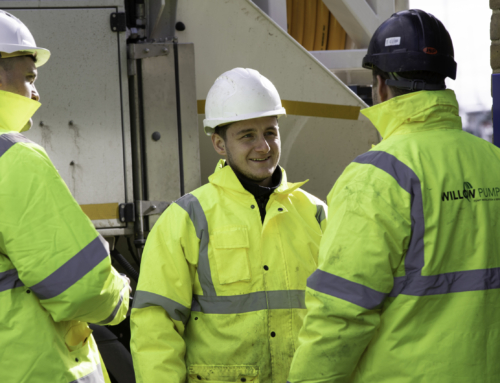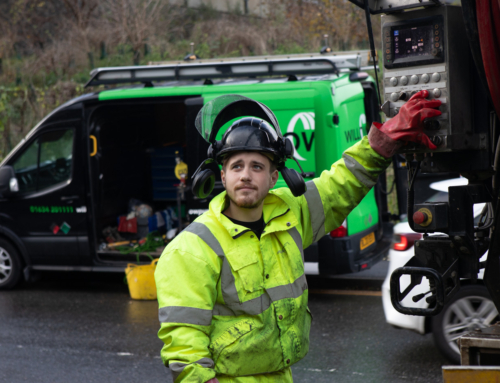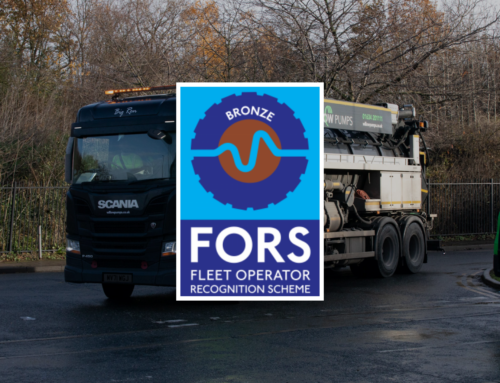You may be unsure what type of wastewater pumping station is right for your site, or perhaps you’re unsure whether you need one at all? Understanding the options can be difficult, but here we provide all the answers you need to make the right choice.
Let’s start with the basics.
What is a sewage pumping station?
Sewage systems most often rely on gravity to deliver wastewater from a residential or business premises into the main sewer. Where a gravity connection is not possible and the waste needs to travel uphill or horizontally to reach the main sewer, a pump station is the answer. Sewage flows into the tank (or wet well) and once it has reached a predetermined level, the pump kicks in and transfers the waste out to a point where gravity can take over.
When deciding whether you need a pump station on your site, it may help to understand how they operate in a bit more detail.
How do sewage pumping stations work?
- The wet well fills up
Sewage travels from the building into the wet well. The level of wastewater rises in the tank and when it reaches a certain point a float switch is triggered, and the pumps will start.
- The pump(s) do their job
How this works depends slightly on the size of your pumping station and whether it has a single or dual pump system.
For a single pump station, once the float switch is triggered the pump kicks in and the waste is transferred out. Simple!
However, we would always recommend considering a dual pump system where feasible – one pump to deal with the inflows and a second pump to provide backup in the unlikely event of pump failure. The pumps would alternate duty with each pump cycle, ensuring even wear. During high flow periods the second pump would start to provide increased capacity.
- Sewage is transferred to the main line.
Most sewage pumps use centrifugal force to transfer energy from the motor to the fluid, moving the fluid from the station to the discharge point where it can join the gravity network.
Once the tank has emptied, the pump will automatically shut off until the tank fills again. The whole process is entirely automatic.
Need more information to decide? Read on for more commonly asked questions, or contact our experienced team at Willow Pumps to talk to us in person.
Do I need a pumping station?
If any of these circumstances apply to you, then you will likely need to install a sewage pumping station on your site:
- The ground level is too low to allow the sewage pipes to travel downwards to the main sewer.
- The sewage pipes pass over a ridge or raised ground.
- The volume of waste from the site is significant enough that a regular system may get overloaded.
- The cost of groundworks to overcome any of these issues would be prohibitively expensive.
By making use of a wastewater pumping station, you can optimise the transfer of waste in a way that reduces cost and increases convenience.
What type of sewage pumping station do I need?
There are three main types of pump station to consider, and at Willow Pumps we can provide an end-to-end service for all of them. Which one you choose will depend on the size and requirements of your site, access to the site, cost and timeline.
Package pump stations
A package pump station is any chamber that is sent to site with pipework and valves already installed.
Pros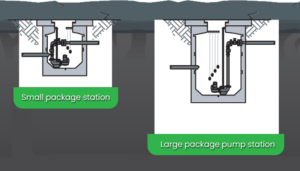
- Typically cheaper
- Minimises confined space entry on site
- Reduced installation time
Cons
- Shorter life span
- Not usually a structural unit
- Limited depth range
Pre-cast concrete pump stations
Pre-cast concrete pump stations involve the chamber being constructed in situ and subsequently fitted out with the required equipment.
Pros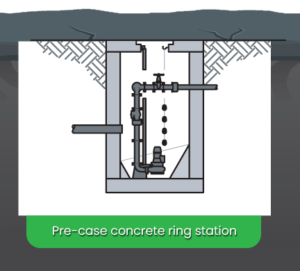
- Longer life span
- More durable
- Good for high water tables
- Greater range of sizes
Cons
- Typically more expensive
- Longer installation and commissioning period on site
Adoptable pump stations
Adoptable pump stations are designed to the relevant water authority’s requirements and offered up for adoption by them under a 104 application.
Pros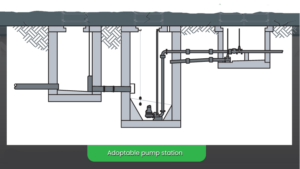
- Cost of ownership and maintenance ultimately taken on by the water authority
- Significantly reduced storage requirements
- Higher equipment specification
Cons
- Higher initial capital costs
- More involved design and installation
- Time needed for the approval process
- Larger area required on site
Still unsure? Get in touch with us at Willow Pumps and we will happily provide advice on your specific project.
After installation, what happens next?
Once your sewage pumping station is installed and fully operational, it will function automatically. If failures do occur, a quick response is vital to reduce disruption to service and avoid costly problems such as flooding of the site. Keeping the whole lifecycle of your project with one provider means you can call on an emergency response from engineers who know and understand your system.
Telemetry
Telemetry can also be installed to provide remote visibility and alarms to a service provider or site management team, but it is important for the pump station to be well maintained to ensure effective operation.
Why is pump station maintenance important?
Failure of a pumping station can lead to extremely high unexpected costs and unwanted downtime. The best way to avoid this is through regular maintenance. Sewage pumping stations work hard in difficult environments and as such, are subject to wear and tear. Just like cars, they are mechanical equipment and require regular servicing to operate effectively.
Catching any problems early and carrying out repairs to your pumping station where necessary will minimise the risk of failures.
Interim maintenance
An interim service allows for a visual and operational health check on your pumping station to gauge how the station is performing and catch any necessary repairs. This can be done on a schedule to suit your site from monthly to quarterly.
Annual maintenance
It’s important to carry out a full service once a year. An annual service involves stripping down and checking all parts, including a full electrical check. It’s best practice to cleanse the wet well during an annual service too.
Emergency callouts
Further questions?
If you’re still unsure about what you need, Willow Pumps has experts on hand for all parts of the process, from the design of sewage pumping stations through to installation and ongoing maintenance and repair. Get in touch with any questions on how we can help.
We understand the need for a provider you can trust and rely on. Read our expert review (as seen in Architects Datafile Magazine) to understand more about the importance of end-to-end service.
Christmas and New Year service
We are all hoping for a joyful Christmas season this year, but of course pumping stations don’t get a break!
We are delighted to say that our 24/7 service continues uninterrupted across the festive season. Don’t hesitate to contact us for any of your needs.
In hours: 01634 201 111
Out of hours: 07714 481 182


